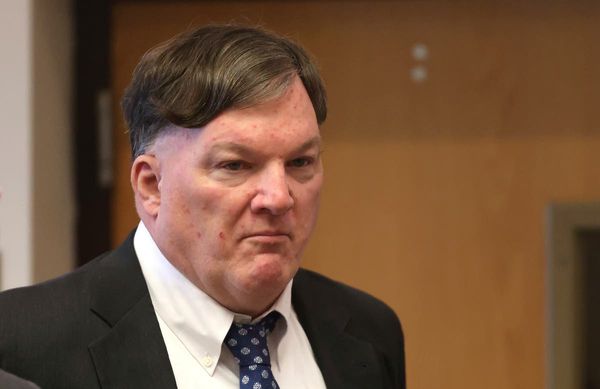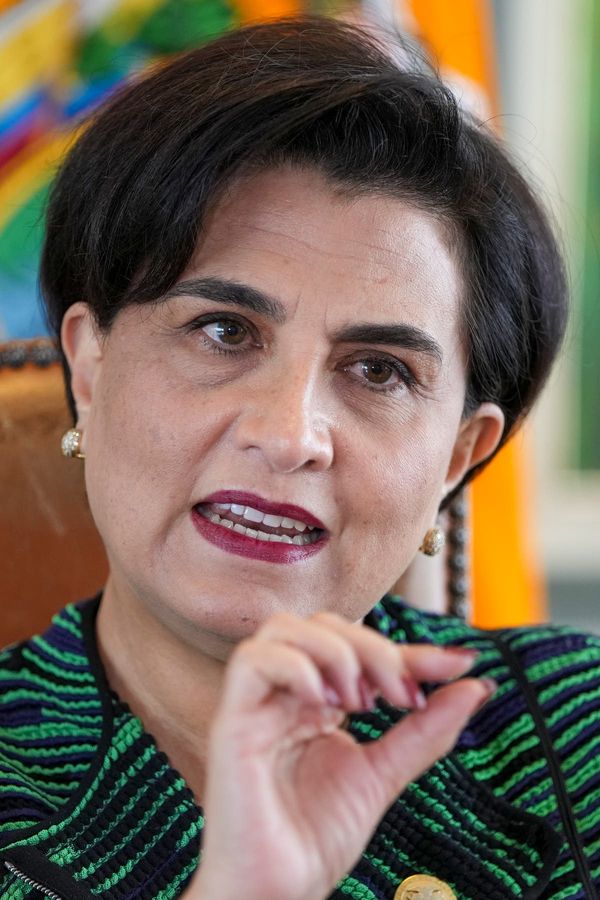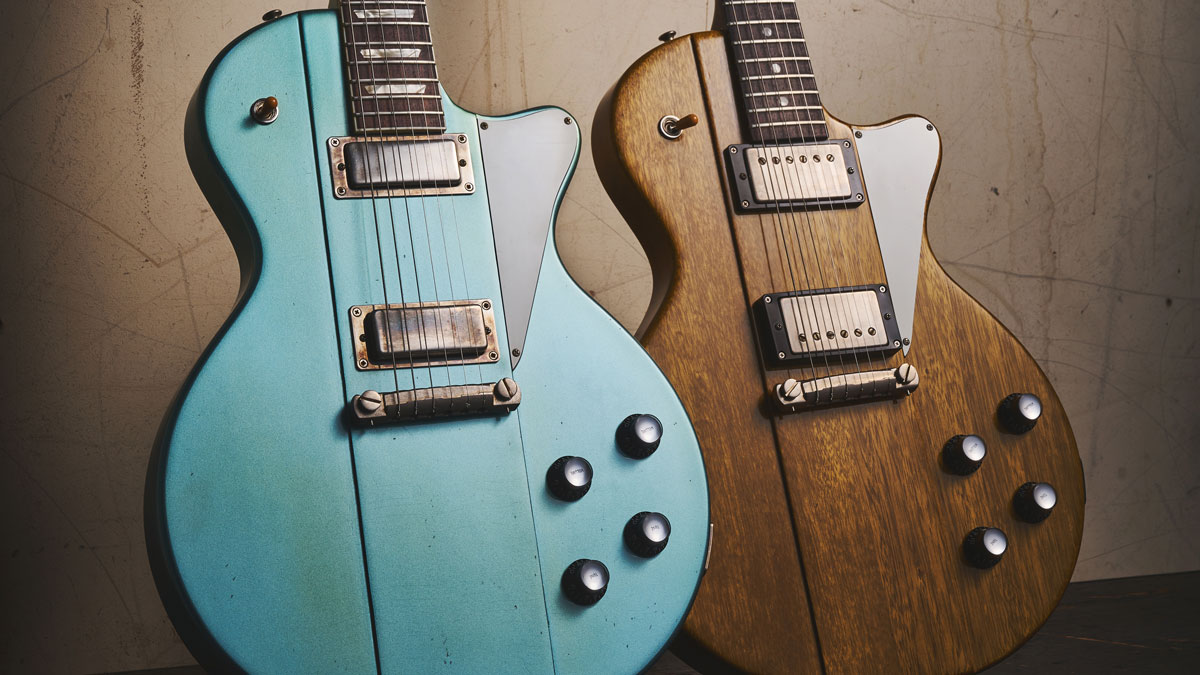
In recent years, we’ve seen more than a few canny luthiers – such as Dennis Fano and Patrick James Eggle – blend together elements from classic vintage guitars to create modern electrics that are built to an exacting contemporary spec yet sound and feel as if they were made in the ’50s. Now, another name can be added to the wishlist of anyone who enjoys the blend of usability and vibe such guitars offer: Ivison Guitars.
Based in Worcestershire, UK, Neil Ivison is its proud founder – but he says it’s almost by accident that he fell into making his high-end, vintage-style electrics. He must be doing something very right, however, because bands such as The Hives and Guns N’ Roses have started using his guitars.
The Dakota model in particular seems to be a favourite, with its blend of Les Paul Junior and Firebird styling cues and just a touch of Telecaster spank and snap – plus versatile range of tonewood and electronics options.
We join Neil to talk about the somewhat charmed life of his guitar-making enterprise, and learn why it’s been driven by player satisfaction and word of mouth all the way to the main stage of Glastonbury…
How did you get into guitar making?
“Well, I’ve been playing since I was 12, and then I was in various bands and what have you. I ended up as a touring guitar tech for about 15 years – went all over the world with various bands. My son was born in 2012 and I decided that [touring] is a young man’s game; I was away from home so much I was missing my son grow up. So I came off the road about a year later. I did various things and thought, ‘Well, I’d like to try and keep my hand in with guitars of some description.’”
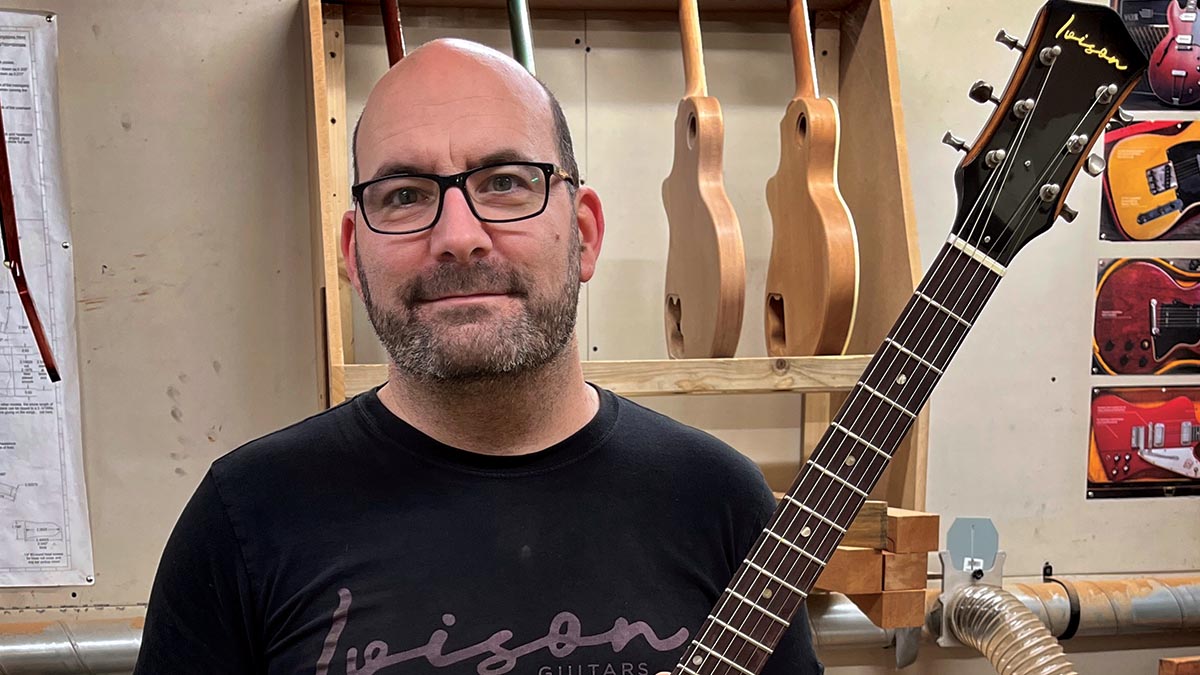
“I was still playing live myself, but I thought I’d set up a little guitar repair business and see how that went. So I started doing that, just in the garage at home, and it was going well. Then somebody asked, ‘Have you ever built anything of your own?’ And I thought ‘Well, no, I haven’t.’
Stu Robson of Sunbear said, ‘I’m just starting out making pickups – would you be interested?’
“At the time, I had a nice ’59 double-cut Les Paul Junior, all-original with no neck break, that I’d saved up for. I’d bought this thing when I was in America and it was beautiful. But it wasn’t a joy to own because I was also bloody scared of leaving it in the house if we were away.
“Or when [my son] Sam was a toddler, if it was on a stand I’d say, ‘Oh no, stay away from the guitar!’ in case he’d knock it off the stand and break the headstock! [laughs] And again, playing live it was like, ‘Ah Christ, I don’t want to leave this in the pub in case it gets pinched.’”
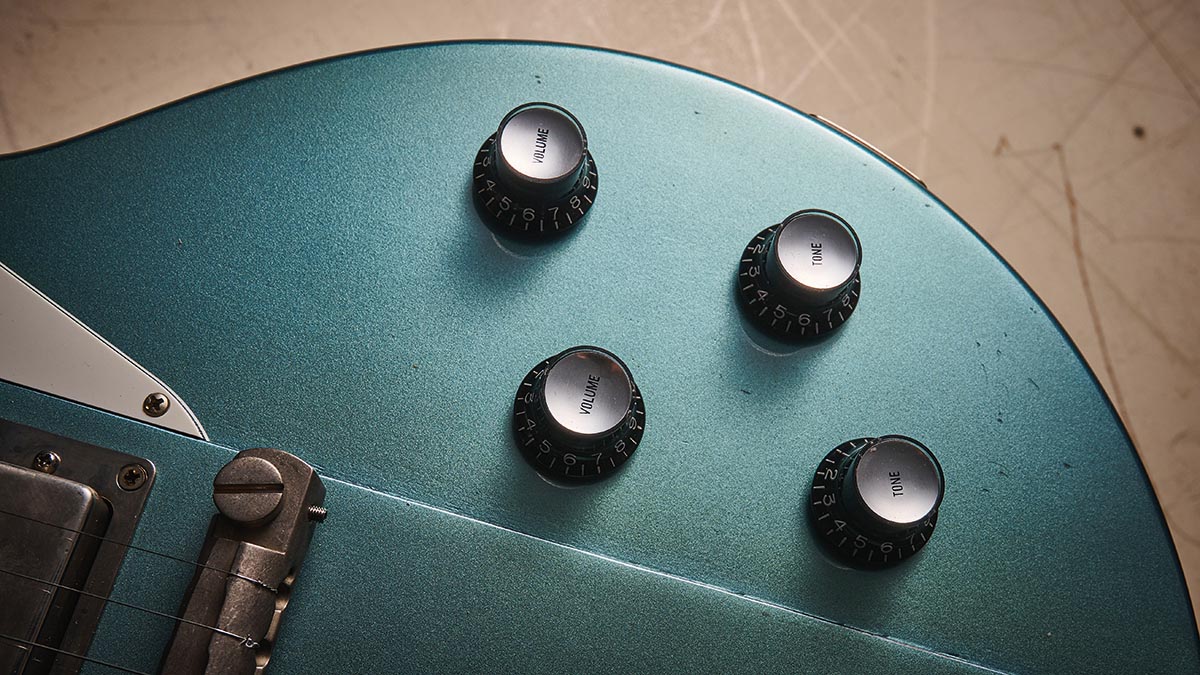
“So I thought I’d have a go at replicating that guitar as closely as I could. I went down a rabbit hole with that and made a double-cut Junior-style electric. Essentially, it was a replica with my own headstock on, at that point anyway, and it came out really well. I was like, ‘Oh bloody hell, this is alright.’ I lent it to a couple of mates and they asked if I could make them one.
“Then someone else asked, too, and within six months it spiralled into this little business. I started making these vintage-correct copies of Juniors and that’s where I honed my craft, I suppose. People were really bowled over by the fact the guitars felt vintage and I’d gone to as much effort as I could to make them sound old as well.
“So I did that for a couple of years, and it got to the point where we had to knock down the garage and build a workshop in its place because it had gone so well. It had turned into a job – I was only hoping it was going to be something I could waste a lot of time doing [laughs]! It was like so many things in life – it sort of comes and gets you. But it was great and I adored it.”

How did you move from near-replicas of Les Paul Juniors to original designs?
“Eventually, I thought, ‘Well, it’s time I had a go at building my own thing.’ So I came up with a guitar called the Hurricane, which had a slab body, like a Junior, with a thin maple top carve, PAF in the bridge and a P-90 in the neck. I’d repaired [session guitarist and journalist] Ed Oleszko’s ’56 Special with a PAF in the bridge and the old P-90 in the neck – and it was a great-sounding combination.
“It had just two controls – volume and tone like the old Junior – so it was basically a mash-up of a Junior, Special and ’Burst. That was the whole idea. I came up with my own body shape and it got good reviews. I also found as soon as you start building your own stuff – with your own input and your own design – it’s far more rewarding. I’m full-time now and in my sixth year of doing so, so everything’s happened really quickly.”
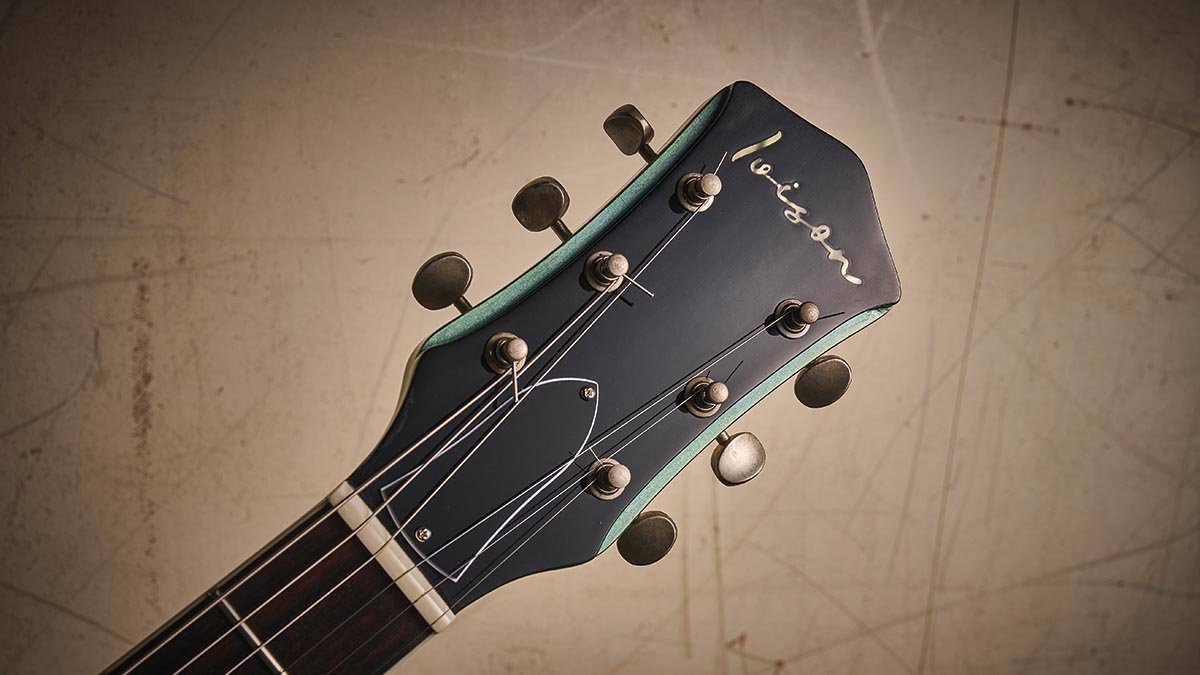
The Hurricane is a great guitar, but it’s the slightly more workmanlike Dakota that’s ended up being used by the most high-profile players among your customers. How did the design take shape?
“Well, Stu Robson of Sunbear Pickups is involved in this story because we’ve been working together for [some time]. Basically, he came to me at a guitar show when I was still doing the Juniors and said, ‘I’m just starting out making pickups – would you be interested?’ We had a chat and immediately I knew; you could tell he was into it. Everything from the magnets to the nickel content of the screws… Straight away I thought, ‘This is my guy.’
“At the time I think I was using Mojo pickups, but as I was new and just starting out [I said], ‘I sort of need a ‘name’ [pickup maker] for a bit of brand confidence, then at least there’s a name people have already heard of attached to it [as a pickup supplier]. So Stu offered to wind me a set: ‘If you don’t like them, you’ll never hear from me again,’ he said. So he wound me a set, and from pretty much then on we’ve worked together and grown together, really, which is nice.”
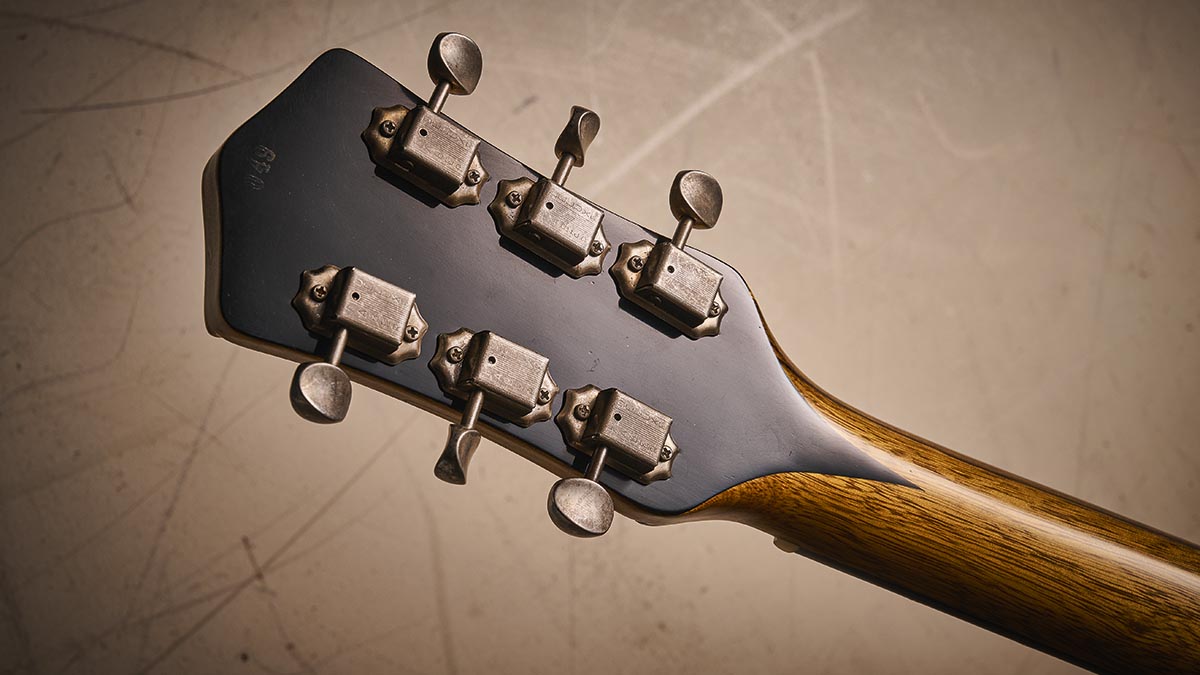
“Going back to the design of the Dakota, Stu said to me one day, ‘Have you ever tried Firebird pickups?’ I hadn’t, but I wanted to build something with them. He was just starting his Sunbird range [of Firebird-inspired pickups].
“I happened to be down at [vintage retailer] ATB Guitars in Cheltenham because I do all their repairs – I have done for quite some while, six or seven years – and they had a Cardinal Red Firebird in, a beautiful-looking thing. I picked it up and tried it and thought it was great. I was sitting there playing it, and it slowly started slipping down off my lap! I kept bringing the neck up, and well… you’ve played a Firebird, you know exactly what they’re like.
“They’ve got this neck-heavy thing with those banjo tuners and there’s just nothing you can do about it. They look cool as – but, to me, nothing about them is ergonomic or [built] with a player in mind, because it was a car designer who designed it. I just thought, ‘There must be a way I can make this more ergonomic but still keep the sound…’”
“So I came back home – it was literally that evening that I got a bit of paper and thought, ‘That would work if I raised up the centre…’ I wanted to keep a bit of the old Junior and Special flavour to it as well, so I kept the long-tenon joint as opposed to the through-neck and obviously raised the centre to get the Firebird look.
“I asked Stu to send me a set of these pickups – and it was a bit of a revelation. As you know, they do that ‘fat Tele’ thing that everybody likes and the bridge pickup can be really spiky and get ‘country’. But the neck pickup on a Firebird, and on the Dakota with Stu’s unit, is one of the best I’ve ever heard. They’re a little bit Strat-y and they just sound really good.
“I sent it to a few people and thought it looked great. I thought, ‘Well, surely somebody has done this before.’ You know, somebody’s [surely] put the Firebird into the single-cut shape. But even now, I’m still waiting for someone to say, ‘Oi! That’s my design!’ But I think it’s actually mine. So I’m quite chuffed about it.”
The crowning moment for the Dakota, so far, must be when it ended up taking centre stage in the BBC’s coverage of Guns N’ Roses headlining Glastonbury in 2023. How did Richard Fortus come to play one?
“It’s quite a funny story, actually. It was one Sunday afternoon and we did a roast and I was asleep on the sofa – as you do after Sunday dinners – and the phone went off. It was Richard Fortus and he said, ‘Hey, man, I really love your guitars. I’ve been following you for 18 months and would love to try one sometime.’
Richard’s such a nice guy and he’s completely gear-addicted. He’s had every sort of vintage guitar you can think of and he’s right into it
“So I said, as I do for any [overseas] musicians who ask, ‘Whenever ,you’re playing in the UK, I’ll bring one out to you.’ I’ve done that with Electric Six and with The Hives – they both play my guitars. He said, ‘Oh, great – actually we’re over in June.’ I said, ‘Oh, cool. Where are you playing?’ He said, ‘Oh, we’re headlining Glastonbury and headlining Hyde Park.’ I was like, ‘What the…? It is that Richard Fortus, who’s had Guns N’ Roses in his biog for the last 22 years!’
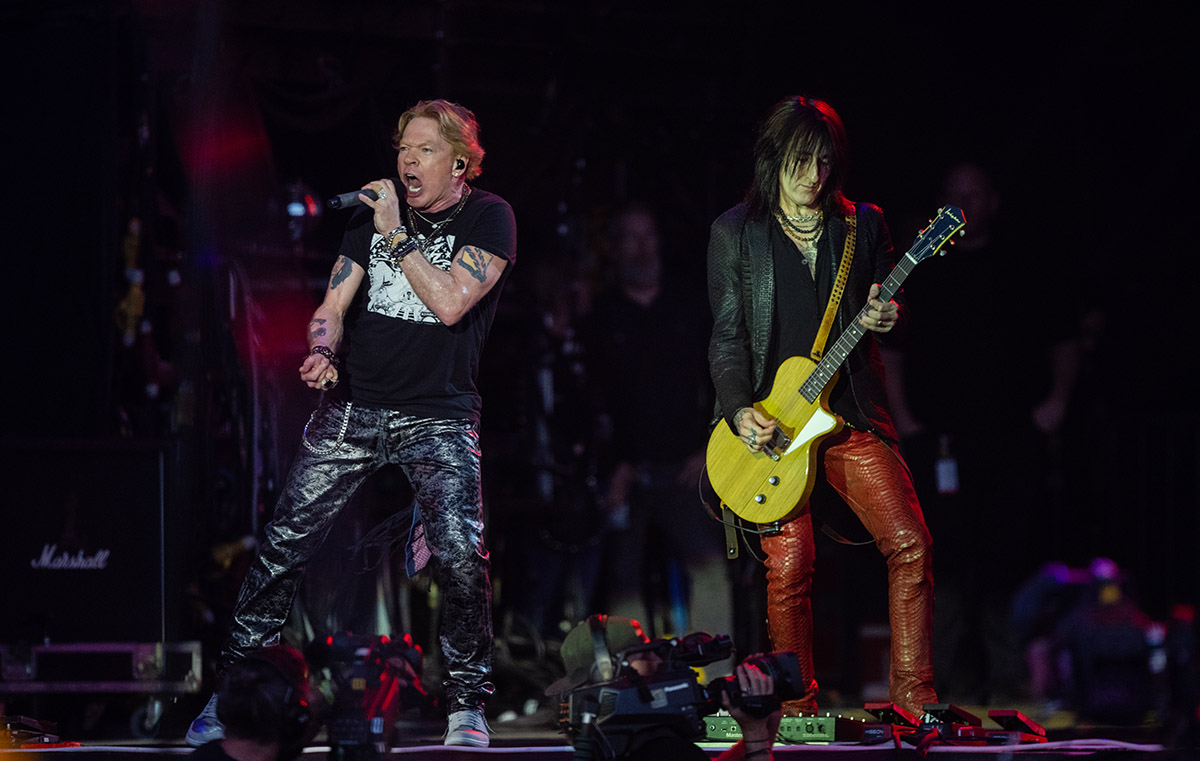
“Richard’s such a nice guy and he’s completely gear-addicted. He’s had every sort of vintage guitar you can think of and he’s right into it – the winds of the pickups, all the different woods. He said to me, ‘Have you ever done a Korina with Firebird pickups?’ And I said, ‘Well, I’ve not, but leave it with me.’ We arranged to meet in Bath on the Friday night and they were playing on the Saturday.
“I took it down and he said, ‘Oh, we’ll meet in Vintage ‘n’ Rare.’ [Paul] Tucker had stayed open for us, so we could try it and he opened the case and said, ‘Oh, man, I’ve lusted after one of these for 18 months.’ He played it for ages and we’d gone back and forward a bit on the spec of the pickup and the pots, but we’d got that sorted.
“I [was concerned that Glastonbury] was a televised gig and the pressure was going to be on, but he was like, ‘Yeah, I know, I appreciate that. But I want it.’ He took me for dinner and we just chatted about his family and stuff, and the guitars he’s had – and he was a really nice guy and a great player, too.”
“I came back up the motorway and thought, ‘That was a bit surreal.’ Then he messaged me after dinner and said, ‘I’ve been playing this in the hotel room, I’m definitely going to play it tomorrow. I’ve shown Slash and he likes it, too…’ I decided not to tell anyone about it because I know my luck and I thought, ‘Well, at the last minute he may decide not to use it.’
“So my wife, Rachel, and I sat in front of the telly to look out for it. Second song in, I couldn’t have planned it better if I’d said to the BBC, ‘What I want you to do is a nice zooming in shot from the back of the crowd up to the Pyramid Stage…’ because that’s what happened and there he was, playing it.
“After that, the phones went and didn’t stop till the Sunday night. It was really great; people were saying, ‘He’s playing your guitar, I knew it from the pickguard…’ or ‘I knew from the shape…’ Straight away, that confirmed that I’d got it right – it was distinctive enough to be an Ivison.”
- For more information, see Ivison Guitars.




